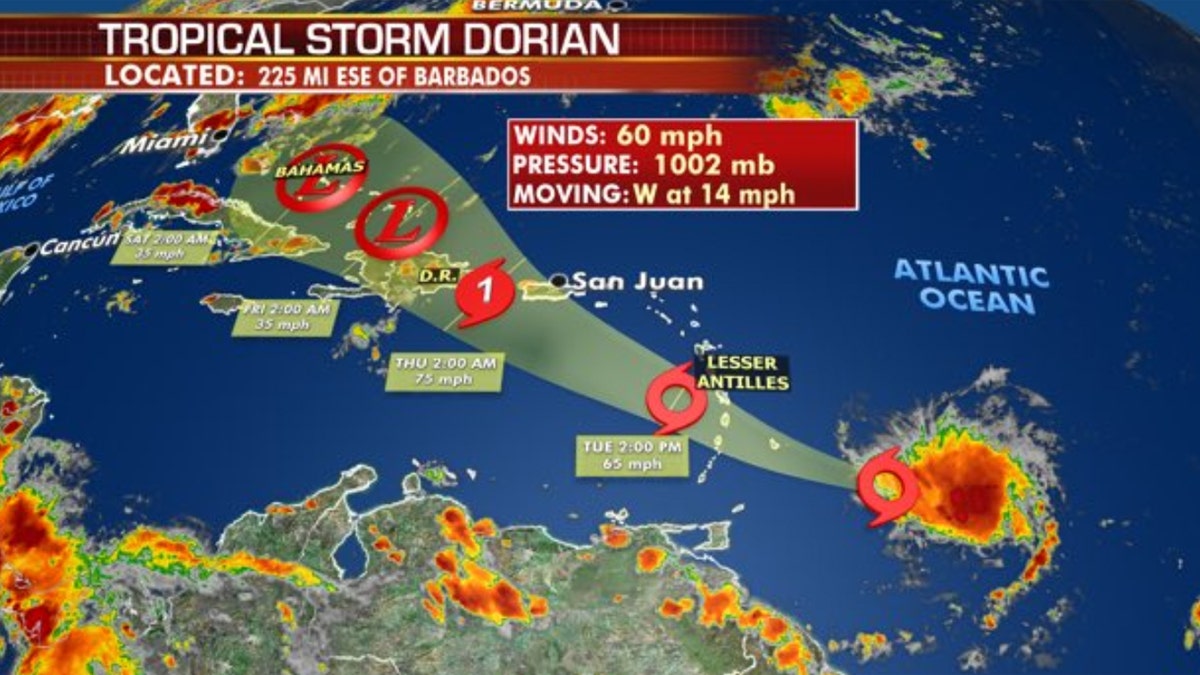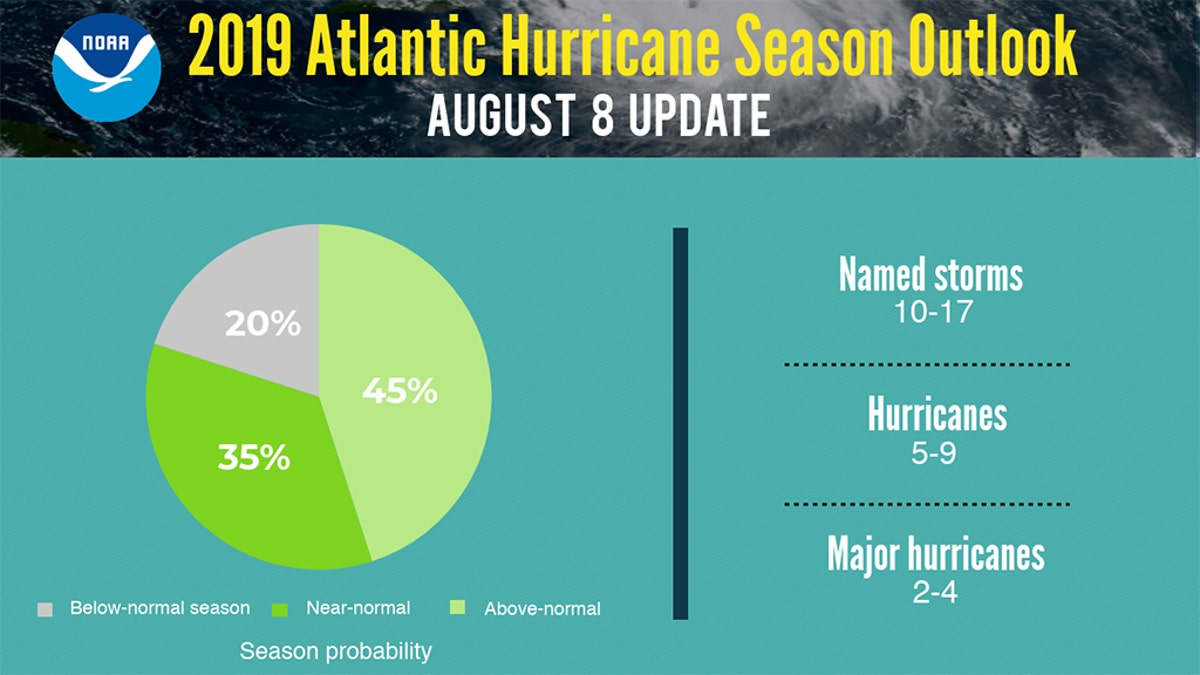The fourth named storm of the Atlantic hurricane season gathered strength Monday while approaching the islands in the eastern Caribbean Sea, as forecasters warn Tropical Storm Dorian could impact Puerto Rico and its neighbors later this week.
The National Hurricane Center said in its 2 p.m. ET update that Dorian is located about 95 miles east-southeast of Barbados, moving west-northwest at 14 mph with maximum sustained at 60 mph. Tropical storm conditions will move into the Winward Islands later today before Dorian moves toward Puerto Rico and Hispanola by Thursday, possibly as a hurricane, according to Fox News Senior Meteorologist Janice Dean.
"The good news is, it's a small hurricane, so even if it does strengthen it could actually also diminish in strength over the next couple of days as it interacts with land," Dean said Monday on "Fox & Friends."
Dorian is a small tropical system, with tropical-storm-force winds extending just 45 miles out from the center of the storm. Forecast models show the system possibly strengthening to a minimal hurricane by Thursday as it makes an approach near Puerto Rico and the Dominican Republic.

The forecast track of Tropical Storm Dorian. (Fox News)
A hurricane watch was issued for St. Lucia on Monday, as the NHC warned that "hurricane conditions possible in portions of the northern Windward Islands."
"Interests in Puerto Rico, the Virgin Islands, and Hispaniola should monitor the progress of Dorian as watches could be required as early as later today," the NHC said.
The NHC issued tropical storm warnings for Barbados, St. Lucia, St. Vincent and the Grenadines. A tropical storm watch was issued for Grenada and Martinique. Dorian could bring 2-4 inches of rain in Barbados, the Windward Islands, and Dominica through Tuesday, with isolated maximum amounts of 6 inches of rain in the region, according to Dean.
Much of the eastern Caribbean island of Barbados shut down on Monday, as Prime Minister Mia Mottley closed schools and government offices across the island as she warned people to remain indoors.
"When you're dead, you're dead," she said in a televised address late Sunday. "Stay inside and get some rest."
In Puerto Rico, which is still feeling the impacts from Hurricane Maria in 2017, residents weren't taking their chances with facing a minimal hurricane.
"It's not as big as when Maria was going to come and people are already flocking to the convenience stores and department stores and just getting water," Richard Colon, who lives on the island, told FOX35 on Sunday.
HERE ARE THE DEADLIEST AND COSTLIEST HURRICANES TO HIT THE US MAINLAND
Dorian is the fourth named storm of the 2019 Atlantic hurricane season and comes nearly a week after Tropical Storm Chantal formed over the far Northern Atlantic. Subtropical storm Andrea formed on May 21 and quickly fizzled a day later over the Atlantic, southwest of Bermuda while Hurricane Barry, the second storm, made landfall in Louisiana on July 13 as a Category 1 storm.

The updated 2019 Atlantic Hurricane Season outlook. (NOAA)
The National Oceanic and Atmospheric Administration advised in its mid-season outlook that conditions in the Atlantic are leading to conditions that are more favorable for tropical activity as we approach September and October, the busiest months of hurricane season.
NOAA forecasters are now calling for 10-17 named storms with winds of 39 mph or higher, of which five to nine could strengthen into hurricanes. Of those storms, there will be two to four major hurricanes, which are classified as Category 3, 4, and 5 with winds of 111 mph or higher.

An area of low pressure off the Southeast coast could also develop over the next few days, but is not expected to affect land and only create swells and rip current along the East Coast, according to Fox News Senior Meteorologist Janice Dean. (Fox News)
Dean said Monday an area of low pressure off the southeast coast could also develop over the next few days, but is not expected to affect land and only create swells and rip currents along the East Coast.
CLICK HERE FOR THE FOX NEWS APP
The 2019 Atlantic Hurricane Season runs from June 1 to Nov. 30, and this year includes the names: Andrea, Barry, Chantal, Dorian, Erin, Fernand, Gabrielle, Humberto, Imelda, Jerry, Karen, Lorenzo, Melissa, Nestor, Olga, Pablo, Rebekah, Sebastien, Tanya, Van, and Wendy.





















